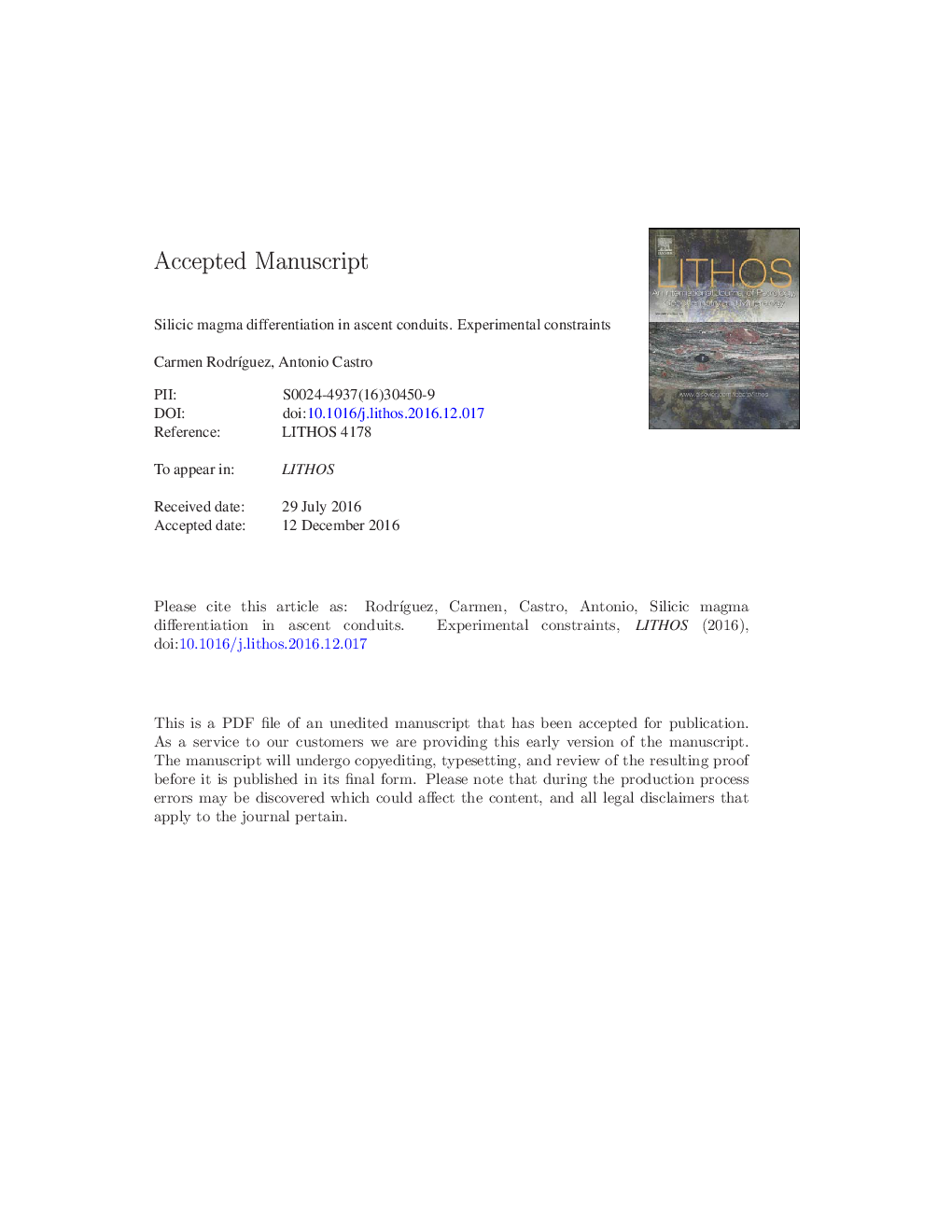| Article ID | Journal | Published Year | Pages | File Type |
|---|---|---|---|---|
| 5784206 | Lithos | 2017 | 59 Pages |
Abstract
Crystallization of water-bearing silicic magmas in a dynamic thermal boundary layer is reproduced experimentally by using the intrinsic thermal gradient of piston-cylinder assemblies. The standard AGV2 andesite under water-undersaturated conditions is set to crystallize in a dynamic thermal gradient of about 35 °C/mm in 10 mm length capsules. In the hotter area of the capsule, the temperature is initially set at 1200 °C and decreases by programmed cooling at two distinct rates of 0.6 and 9.6 °C/h. Experiments are conducted in horizontally arranged assemblies in a piston cylinder apparatus to avoid any effect of gravity settling and compaction of crystals in long duration runs. The results are conclusive about the effect of water-rich fluids that are expelled out the crystal-rich zone (mush), where water saturation is reached by second boiling in the interstitial liquid. Expelled fluids migrate to the magma ahead of the solidification front contributing to a progressive enrichment in the fluxed components SiO2, K2O and H2O. The composition of water-rich fluids is modelled by mass balance using the chemical composition of glasses (quenched melt). The results are the basis for a model of granite magma differentiation in thermally-zoned conduits with application of in-situ crystallization equations. The intriguing textural and compositional features of the typical autoliths, accompanying granodiorite-tonalite batholiths, can be explained following the results of this study, by critical phenomena leading to splitting of an initially homogeneous magma into two magma systems with sharp boundaries. Magma splitting in thermal boundary layers, formed at the margins of ascent conduits, may operate for several km distances during magma transport from deep sources at the lower crust or upper mantle. Accordingly, conduits may work as chromatographic columns contributing to increase the silica content of ascending magmas and, at the same time, leave behind residual mushes that eventually are dragged as enclaves or autoliths.
Related Topics
Physical Sciences and Engineering
Earth and Planetary Sciences
Geochemistry and Petrology
Authors
Carmen RodrÃguez, Antonio Castro,
